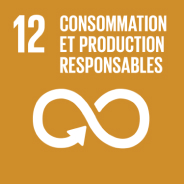As the European PPWR regulation approaches its implementation, many companies are facing a dilemma: continue using single-use packaging solutions, often perceived as cheaper upfront, or invest in reusable alternatives to comply with new environmental requirements?
The answer to this question lies in an essential but often overlooked concept: the Total Cost of Ownership (TCO).
Why purchase cost is no longer enough
Let’s take a concrete example: the plastic film used to wrap pallets. At first glance, the cost seems modest: about €15 to wrap 6 pallets, or around €2.5 per pallet. But this cost doesn’t include:
- Waste management (collection, sorting, recycling, or incineration)
- Labor costs associated with daily use or investment in a wrapping machine and/or equipment maintenance
- Risks of non-compliance with future regulations
- The growing environmental impact, which indirectly affects your image and competitiveness
- And what about the invisible cost: the demotivation or eco-anxiety of employees, forced daily to use disposable materials that contradict their environmental values?
PPWR changes the rules of the game
PPWR introduces an obligation to reduce single-use packaging and strongly encourages the use of reusable solutions. In other words: the cost of non-compliance is going to skyrocket. Fines, new taxes, increased regulatory pressure, and also a loss of appeal for customers and clients who are increasingly demanding about environmental commitments.
Towards a talent shortage for non-committed companies
And tomorrow, it will also be harder to attract and retain employees, because working for a company that doesn’t take environmental responsibility is becoming less and less acceptable to new generations.
TCO: a strategic lever
TCO, or Total Cost of Ownership, refers to all costs associated with the purchase, use, maintenance, and end-of-life of a product over its entire lifecycle. In other words, it’s not what you pay when ordering, but everything that purchase truly costs you in the long term. It’s an essential tool for comparing solutions, especially when one is disposable and the other is reusable, such as plastic film vs. reusable pallet covers. It allows you to:
- Make informed long-term decisions
- Avoid short-term false “good deals”
- Justify your investment choices internally or to your clients
Cost example: wrapping 600 pallets
Option 1 – Single-use plastic film (machine)
- Plastic film cost: 100 rolls x €15 = €1,500
- Automatic wrapping machine:
- Investment: €12,000
- Estimated lifespan: 5 years
- Average annual use: 10,000 pallets
- Amortization for 600 pallets: (12,000 / (5 x 10,000)) x 600 = €144
- Estimated machine maintenance: €800/year
- Cost for 600 pallets: (800 / 10,000) x 600 = €48
- Energy + secondary consumables: €30
- Labor: low but present (supervision, maintenance)
- Waste management (plastic film): 100 used rolls = estimated €100
Total TCO ≈ 1,500 + 144 + 48 + 30 + 100 = €1,822
Cost per pallet: €1,822 / 600 = ~ €3.04
Option 2 – Reusable pallet covers (manual)
- Cost of 6 reusable covers: 6 x €250 = €1,500
- Lifespan: 100 uses each → 600 pallets covered
- Labor: already present internally
- Application: 1 min/cover, integrated into logistics routine
- No significant extra cost, no pallet movement to the wrapping machine
- No machine, no maintenance
- No waste to manage
- Cover maintenance (optional): occasional washing or inspection = ~ €50 estimated
Total TCO ≈ 1,500 + 50 = €1,550
Cost per pallet: €1,550 / 600 = ~ €2.58
Making the right choices today to stay competitive tomorrow
The reusable pallet cover is not just a logistics tool. It is a concrete, measurable, and profitable response to the economic and regulatory requirements of tomorrow. By integrating the total cost of ownership into your decisions, you make a winning choice on all levels: financial, operational, environmental… and regulatory.
Even when factoring in machine investments and operating costs, the reusable solution remains significantly more cost-effective over a standard usage cycle. The difference is clear: €0.46 savings per pallet, or €274 saved on 600 pallets. All this without producing waste, without relying on expensive equipment, and with natural PPWR compliance, without heavy adaptation.
Calculate Loopipak's impact on your business
Loopipak helps its customers to adopt sustainable consumption and production patterns. This is the United Nations' Sustainable Development Goal 12. Find out more about our product lifecycle analyses in relation to disposable plastic bags, rigid paper envelopes and cardboard boxes.
Calculate
Total cost of ownership vs. purchase price